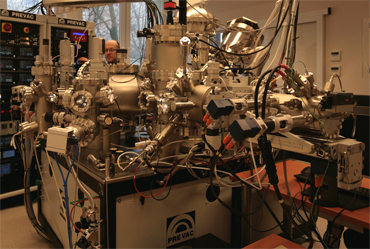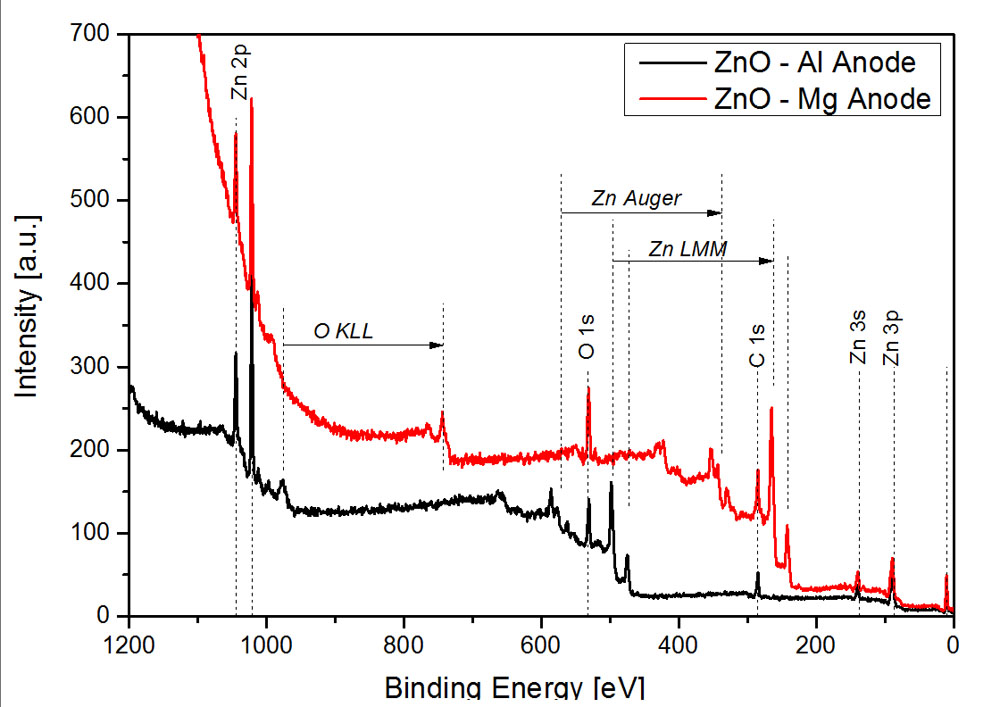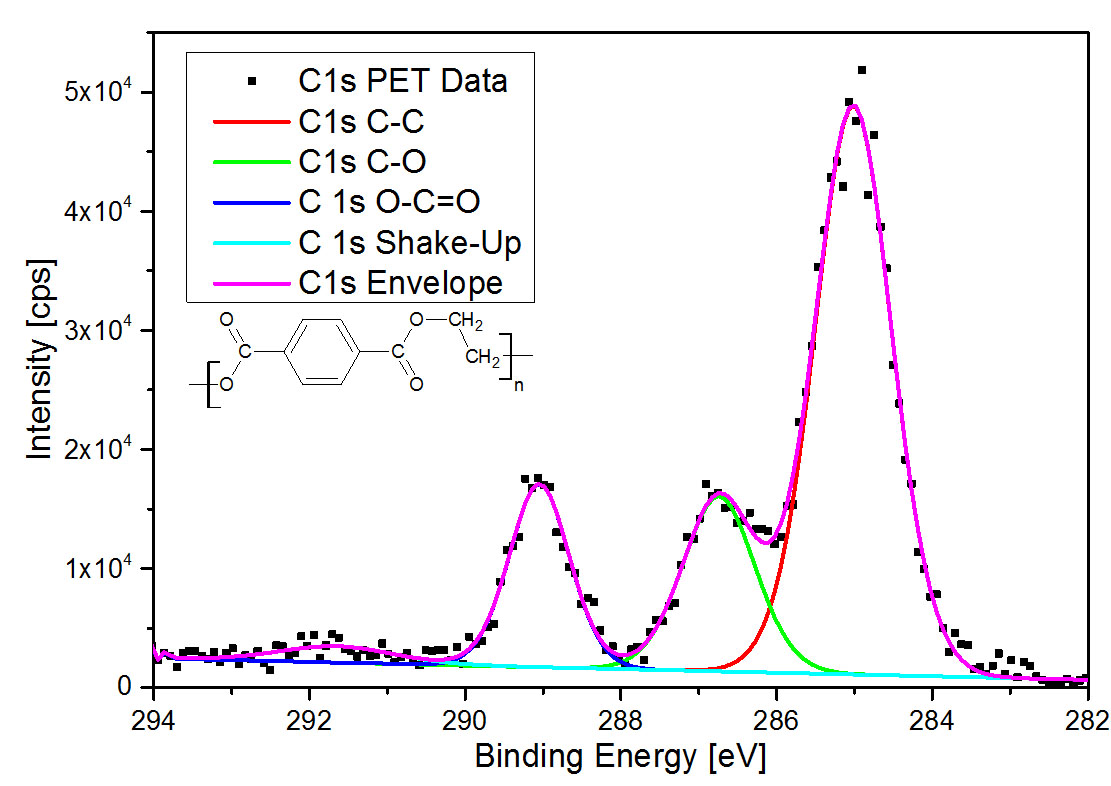Characterization - X-ray/UV photoelectron spectroscopy (XPS/UPS) and low energy electron diffraction (LEED)

X-ray/UV photoelectron spectroscopy (XPS/UPS) and low energy electron diffraction (LEED)
|
In the X‑ray Photoelectron Spectroscopy (XPS), or Electron Spectroscopy for Chemical Analysis (ESCA), the sample surface is irradiated with a low energy X‑rays (Kα Al – 1486 eV or Kα Mg – 1253 eV). The X‑rays excite the bounded (core) electrons of the sample atoms to the vacuum, then the analyzer measures the binding energy and intensity of photoelectrons. From this XPS spectrum the elemental identity, chemical state (chemical bonds), and quantity of an element can be determined. The technique is a surface sensitive as most of the detected photoelectrons originate from atoms near the sample surface (1-10 nm). Evaluable techniques - High resolution mode explores for excitation monochromatized Al Kα radiation.
- Angle-resolved (ARXPS) technique permits determination in a non-destructive way the order and thicknesses of fine multilayer (up to 10 nm) combined with the elemental distribution and chemical states of each layer.
- Depth profiling (destructive) with Ar+ ion gun makes possible to analyze the elemental and chemical composition deeper (>10nm) in the sample.
- Ultraviolet photoelectron spectroscopy (UPS) with UV lamp allows studying the valence energy levels and the bonding character of molecular orbitals.
- Low-energy electron diffraction (LEED) is a technique for the determination of the surface structure of single-crystalline materials. It provides information on the symmetry of the surface structure or in case of the presence of an adsorbate on the rotational alignment of the adsorbate unit cell with respect to the substrate unit cell.
- The preparation chamber allows different kinds of sample preparation (surface cleaning, evaporation, annealing, cooling, introduction of reactive gases in controlling ways, etc.) previous to the XPS/UPS analysis.
|

XPS or ESCA spectrometer with X-ray monochromatic radiation and Scienta hemispherical analyzer. |

Survey Spectra of ZnO acquired with the Twin-Anode allowing identifying XPS and Auger peaks. |

High resolution carbon C1s spectra of a PET water bottle sample. |
|




